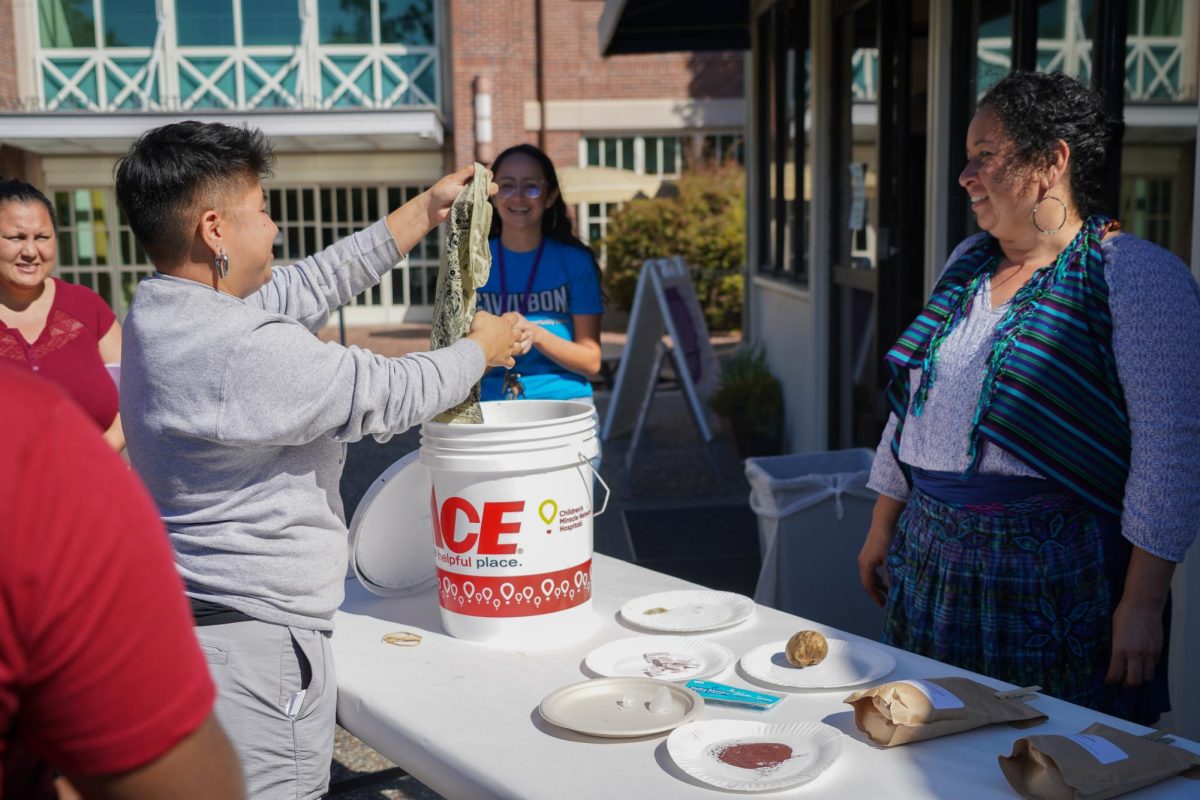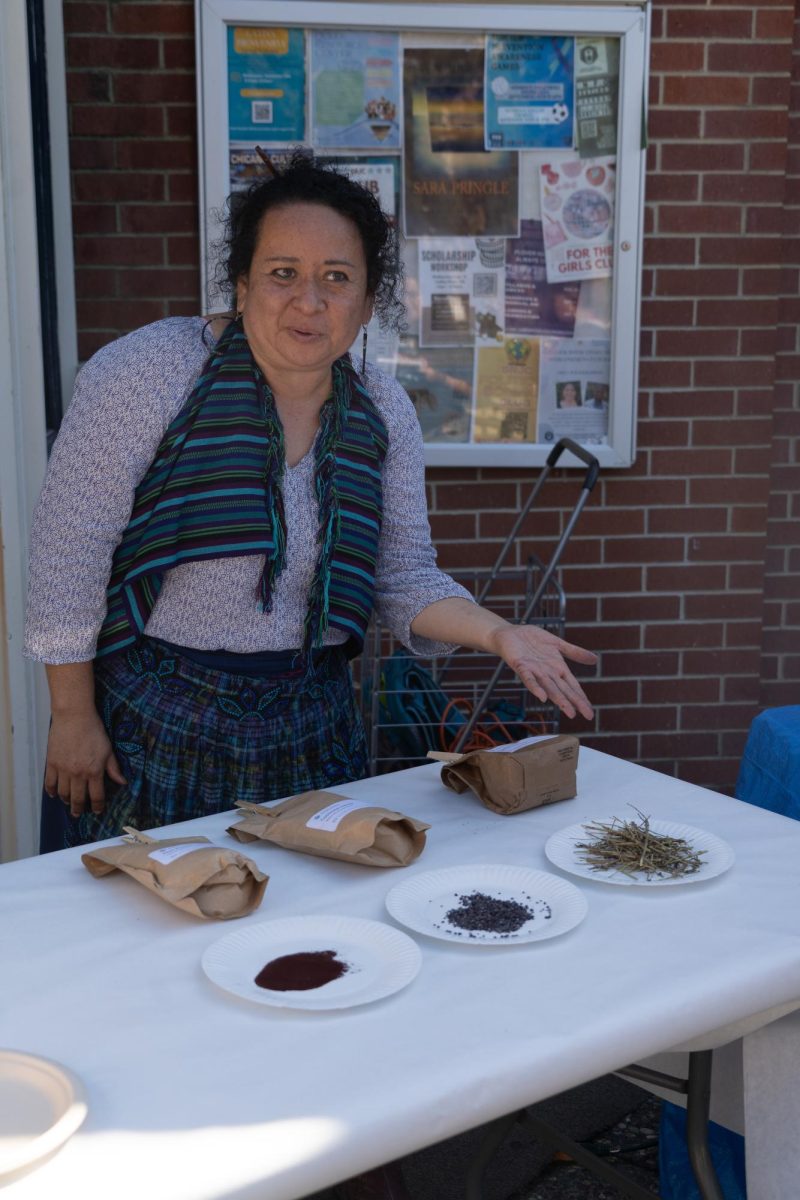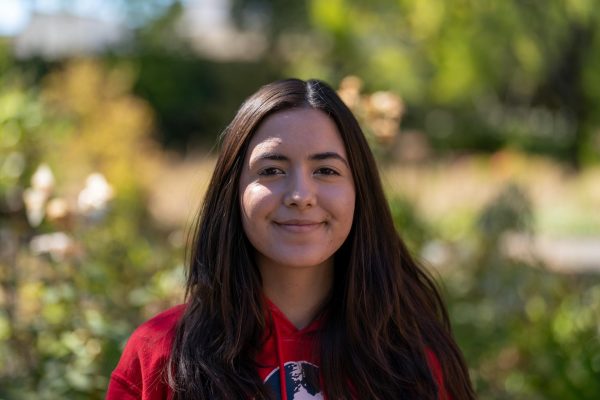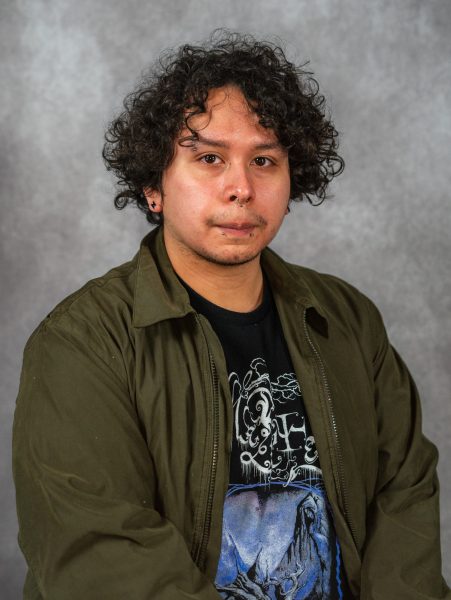The mention of tie dye brings up thoughts of hippies and love children, but as shown by Sari Monroy during the workshop on Sept. 19 outside the Santa Rosa Junior College Intercultural Center there is a more historical aspect.
Before the workshop, the bandanas had been soaked in tannin, which was extracted from eucalyptus bark and acted as a bond between the fabric and the dyes to have a saturated and longer lasting dye.
The materials used for the dyes were all different. Two were herbs, one of which can be used to make tea for medicinal purposes known as pericorn, the second was rich purple log-wood. Lastly we used grinded cochineal, insects that are typically found on cactuses.
These insects produced such vibrant red in Mayan clothing that colonizers from Spain immediately exploited and exported exclusively to their country for hundreds of years.
It’s advised to leave the fabric in its respectable dye for at least 10 minutes. For a more vibrant color it can be left in for longer, even overnight. However, you must ensure it stays between 160 F to 180 F.
Next it has to be sun dried to ensure the pigment soaks up all of the dye and to prevent bleeding onto other items in the dryer.
In Mayan culture, dyeing fabrics was done mostly by women. However, it wasn’t exclusive to them. Any leftover dye would be given to men who used it for paint in pottery or other forms of art.
Felix, an attendee, elaborated on how they greatly enjoyed the workshop and the history of the practice that were told. The flow of the event went well after classes ended in the area many people gathered around to join in. Participants got to take home some of the dye to continue after the workshop ended.






